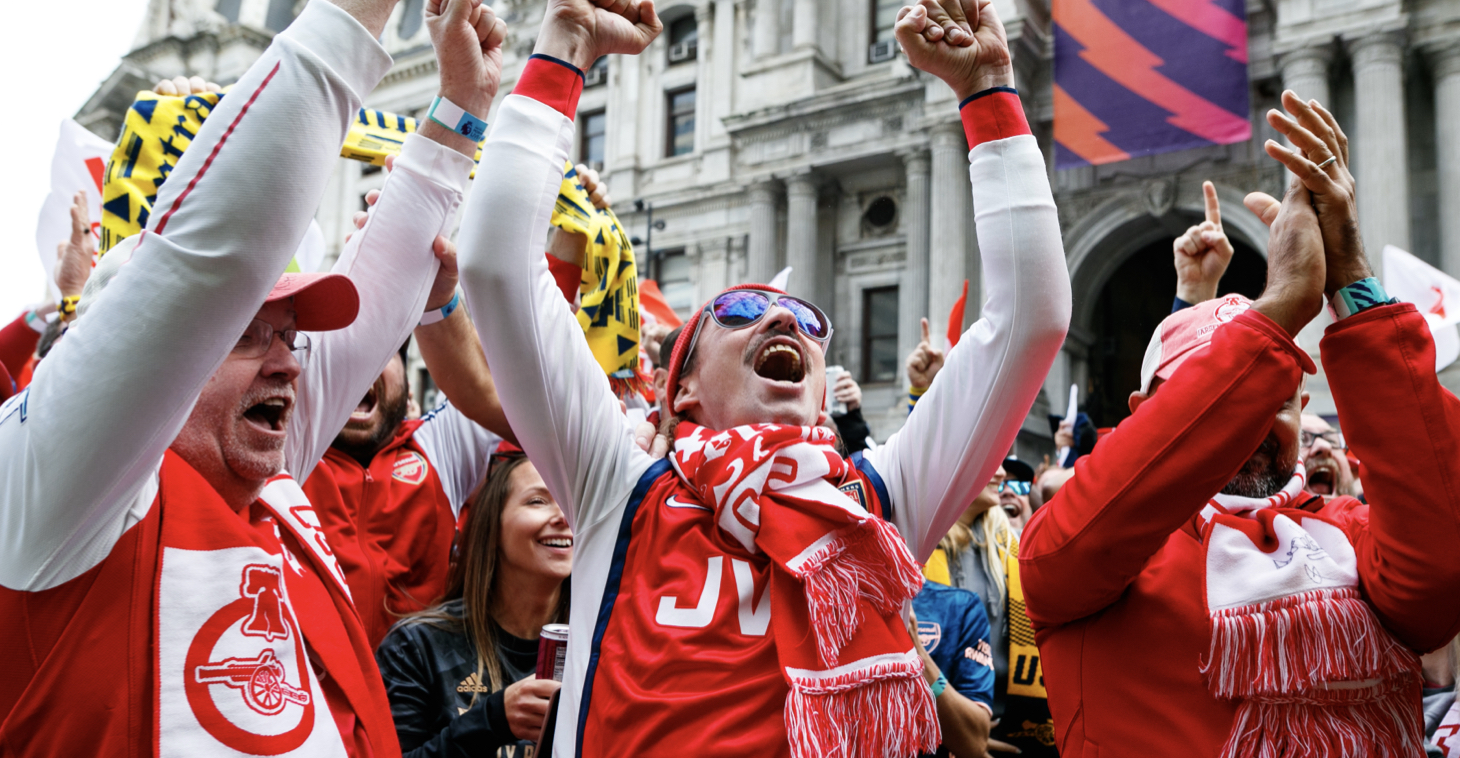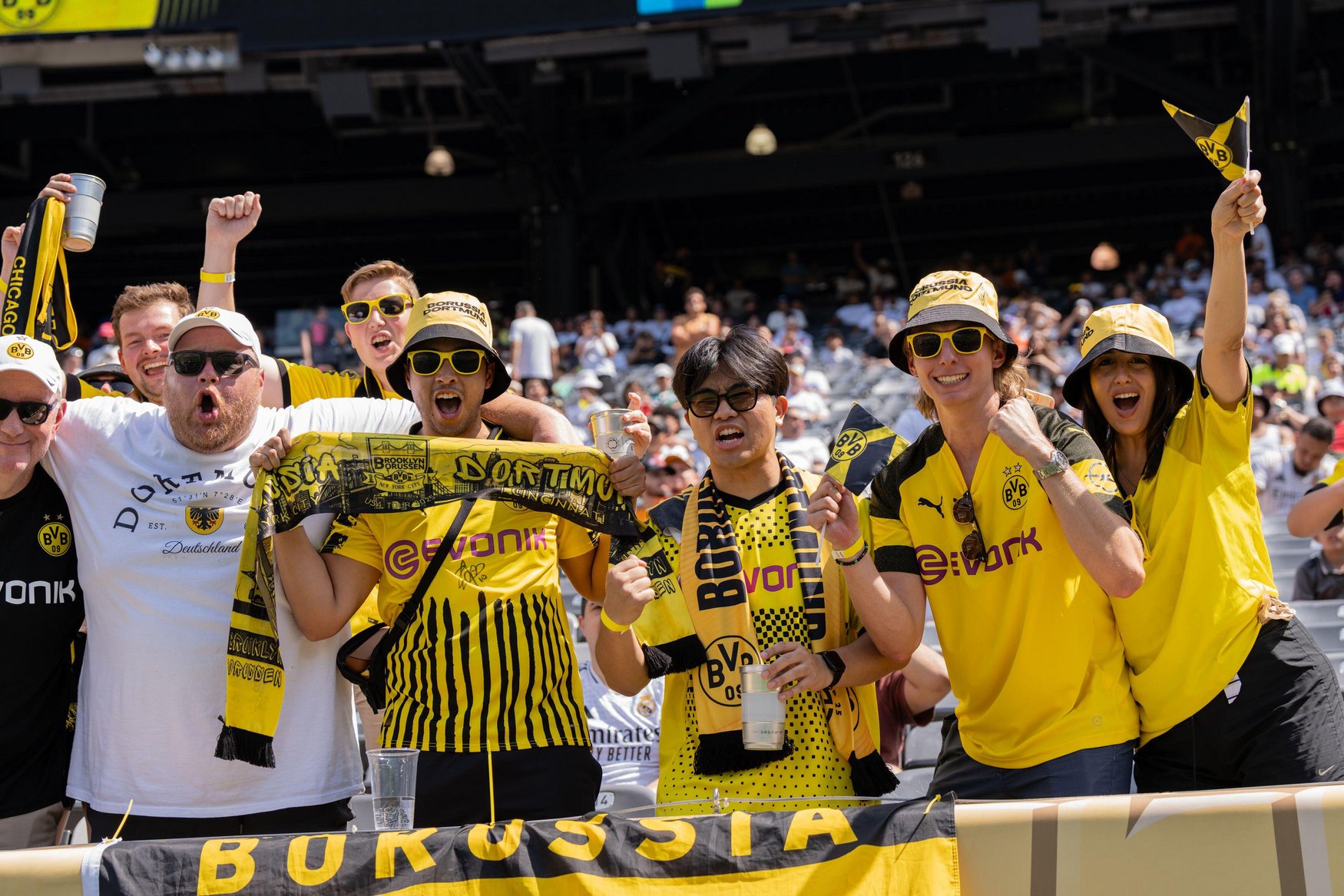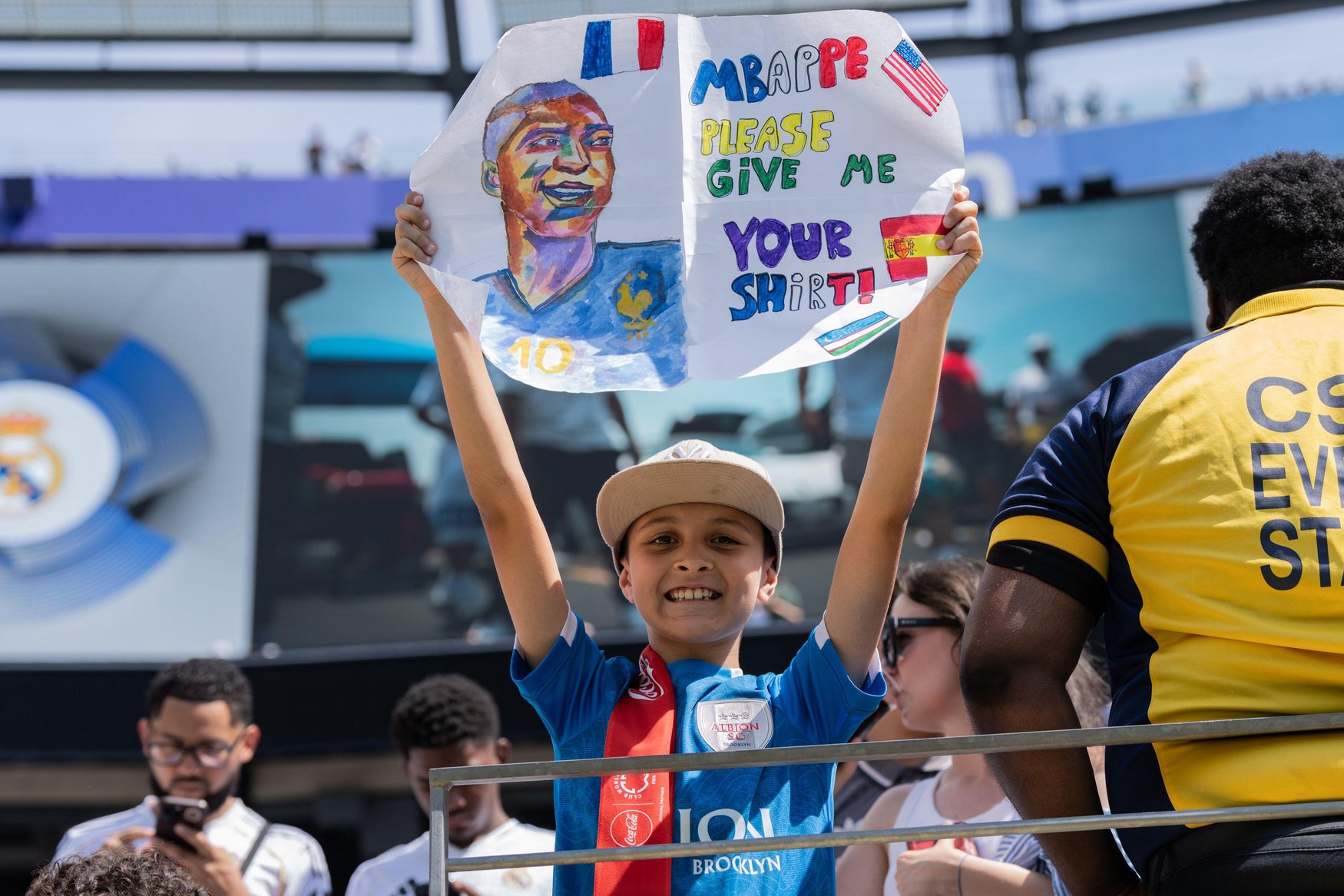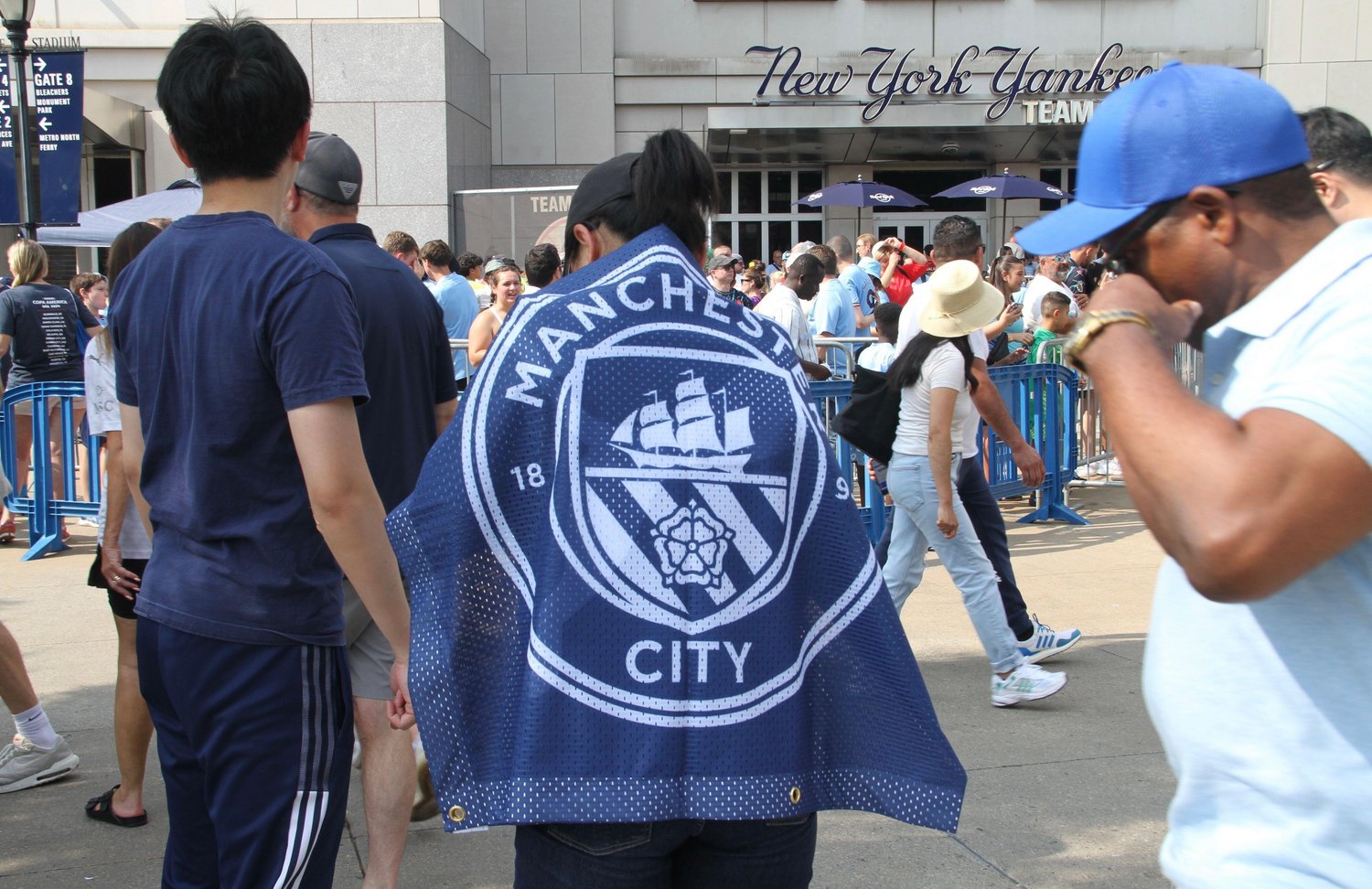
European soccer is back. After a summer break, the Premier League, La Liga, Bundesliga, Serie A, Ligue 1, and others across the continent have all kicked off their new seasons—and American fans are tuning in like never before. In fact, NBC Sports’ presentation of the Premier League’s opening weekend was the most-watched opening weekend for the league in U.S. history. The rise of streaming platforms, international broadcasting deals, and digital accessibility has created multiple pathways into soccer culture, each attracting distinct audiences with their own characteristics and viewing habits.
This report continues our mini report series for 2025. After examining MLS fans in our most recent report, we’re now turning our focus to fans of European leagues to understand who they are and how they differ from supporters of domestic men’s leagues in the U.S. In the insights you’ll read below, we’re comparing the most passionate fans of European leagues (those rating Premier League, Bundesliga, Serie A, Ligue 1, and La Liga at 6-7 on a seven-point interest scale) against equally passionate supporters of domestic men’s leagues (MLS and USL).
The findings challenge assumptions about who European league fans are, how they discovered soccer, and what drives their engagement. From urban concentration to analytical viewing habits, from organized play to social media intensity, the data reveals two distinct approaches to fandom. Understanding these differences matters for anyone seeking to engage America’s increasingly sophisticated soccer audience.

PASSION PATTERNS: WHERE FANDOM MEETS DEMOS
Here’s what jumps out when you compare the most passionate European league supporters with their domestic counterparts: they’re different crowds, drawn to soccer through different paths and sticking around for different reasons.
European league fans skew more Male (70% versus 61% for domestic supporters) and tend to be a bit older: 71% are 35 or older compared to 63% of domestic fans. That age gap tells a story about soccer tenure: 70% of European league fans have been following the sport for over 10 years versus 63% of domestic supporters, suggesting many flocked to European soccer before MLS and USL really hit their stride.
The demographics get more interesting from there. European league supporters are more likely to hold post-graduate degrees (45% versus 35%) and earn over $100K annually (46% versus 40%). We’re not talking huge differences, but they point toward European league fandom appealing particularly to established, educated demographics—patterns that likely reflect both the older age profile and the career stage that comes with it.
The real eye-opener is where these fans live. European league supporters concentrate in cities at much higher rates (65% versus 56%) while domestic supporters show stronger suburban representation (29% versus 21%). This urban clustering makes sense when you think about access to international soccer culture, diverse communities, and viewing venues built around global sports consumption.
GEOGRAPHIC SPLIT: EUROPEAN VS. DOMESTIC LEAGUE FANS
Even their other sports interests lean international. European league fans are more drawn to tennis (33% versus 27%), golf (31% versus 25%), and motorsports (6% versus 3%)—all sports with more global reach and international flavor.
Family life follows similar patterns, with 67% of European league fans having children 14 and under compared to 54% of domestic supporters, again reflecting that slightly older, more established demographic. Ethnically, European league fandom draws from a somewhat less diverse base—64% White versus 59% for domestic leagues, with lower Hispanic representation at 25% compared to 29%.
These patterns don’t create rigid categories, but they do show how American soccer’s diverse landscape offers different entry points that resonate with different communities. The complexity isn’t in choosing sides, it’s in understanding how various demographics find their way into the beautiful game.

MORE THAN ONE WAY TO LOVE THE GAME
The demographic differences we just saw translate into different approaches to fandom. European league supporters and domestic fans don’t just cheer for different teams—they engage with soccer in different ways.
Start with how they themselves play the game. European league fans stay slightly more connected to actually playing soccer, with 80% still active versus 74% of domestic fans. More telling: they gravitate toward organized competition, with 45% playing in structured leagues compared to just 29% of domestic supporters. Meanwhile, domestic fans lean toward casual pickup games (45% versus 35%).
DIFFERENCES IN LEAGUE PREFERENCES
The preference data above tells the story in black and white. European league fans rank the Premier League, La Liga, Bundesliga, Serie A, and Ligue 1 among their five favorite leagues, collectively averaging 3.0. Domestic fans flip this completely, placing those same leagues at 6.4 on average while ranking MLS and USL as their top two favorites.
But the real difference shows up in how they discovered soccer in the first place. European league supporters are more likely to arrive as general sports fans drawn by the sport’s global appeal (20% versus 16%) or through gaming exposure (8% versus 5%). Domestic fans show stronger social and participatory roots, becoming fans through their social circles (9% versus 6%) or because they played the sport themselves (18% versus 12%). European league fandom develops more through external discovery; domestic fandom grows from community and participation.
When it comes to focus, European league fans take more targeted approaches. They’re more likely to concentrate on just one league (21% versus 16%) and slightly more likely to support only one team (26% versus 22%). Domestic fans show a more diffused “support local” mentality with 8% caring more about their specific team than any league structure, compared to just 3% of European league supporters.
Even team selection reveals different motivations. European league fans are slightly more likely to choose teams through gambling or betting interest (19% versus 12%), while domestic supporters lean toward stadium atmosphere (29% versus 23%) and specific player connections (38% versus 33%). These patterns reinforce the broader theme: European league fandom tends toward analytical engagement while domestic fandom emphasizes experiential connection.
FAVORITE EUROPEAN TEAMS AMONG FANS
Want the clearest picture of what European league fans actually care about? Look at their team loyalties. The list of clubs that capture the most passionate European league supporters reveals the predictable global giants you’d expect.
Barcelona leads the way, followed by Real Madrid, Manchester United, Liverpool, and Manchester City. Bayern Munich, Arsenal, Chelsea, Paris Saint-Germain, and Juventus round out the top 10. It’s a who’s who of European soccer’s biggest brands—the clubs with global reach, star power, and the kind of marketing presence that travels well across the Atlantic.
FAVORITE TEAMS AMONG EUROPEAN FANS

HOW EUROPEAN FANS ENGAGE DIFFERENTLY
The focused approach European league fans take to team selection shows up elsewhere, too. The same analytical mindset that drives their targeted fandom translates into much higher engagement across every touchpoint—viewing hours, social media habits, sponsor relationships, you name it.
Start with time investment. European league supporters watch more soccer: 88% watch over three hours weekly compared to 77% of domestic fans. They’re also more likely to watch on mobile devices during off-peak times—a pattern that aligns perfectly with European league scheduling during American work hours or weekend mornings and afternoons when individuals or families are juggling other commitments.
That analytical approach carries into their relationship with soccer’s commercial ecosystem. European league fans notice sponsors at higher rates (89% versus 77%) and actually act on that awareness. They’re more likely to buy sponsor products to support teams (92% versus 83%) and view brands more favorably simply because of soccer connections (89% versus 80%). They even pay attention to granular details: they spot stadium naming rights more often (45% versus 38%), catch in-stadium signage (53% versus 48%), and notice brands on interview backdrops at a slightly higher clip (41% versus 36%).
SPONSOR ENGAGEMENT: EUROPEAN VS. DOMESTIC LEAGUE FANS
Social media follows the same intensity patterns. European league supporters check soccer content multiple times daily at higher rates (61% versus 49%), and soccer comprises a larger percentage of their overall social feeds (61% versus 53%). They gravitate toward specialized soccer accounts over general sports media, following soccer-specific pages, individual teams, and leagues at higher rates while showing less interest in broad sports outlets like ESPN or CBS Sports.
Their content preferences reveal sophisticated tastes that align with their analytical approach. European league fans seek betting and fantasy content 11% more than domestic supporters, along with documentaries (9% more) and memes or humorous content (8% more). They want deeper, more specialized soccer content rather than surface-level coverage.
Even game selection gets the analytical treatment. Betting and fantasy considerations drive viewing decisions 15% more often. The presence of American players (10% difference) and star player involvement (7% more) carries additional weight, suggesting they approach game selection through multiple filters rather than casual browsing.
The consumption patterns reinforce everything we’ve seen so far. European league supporters bring the same urban, educated, analytical mindset to content consumption that they apply to team selection and league focus.

UNDERSTANDING THE BIGGER PICTURE
The comparison between passionate European league supporters and domestic men’s league fans shows American soccer isn’t just growing—it’s evolving into something more sophisticated. Rather than competing tribes, these represent different pathways into soccer culture, each serving different communities and fulfilling different needs within America’s expanding sports landscape.
Key Takeaways:
These insights create opportunities for leagues, brands, and media companies to engage distinct but overlapping audiences through approaches that recognize soccer fandom’s complexity rather than oversimplifying its diversity.